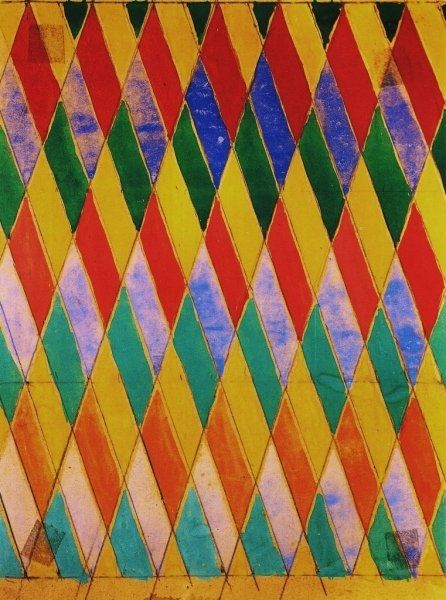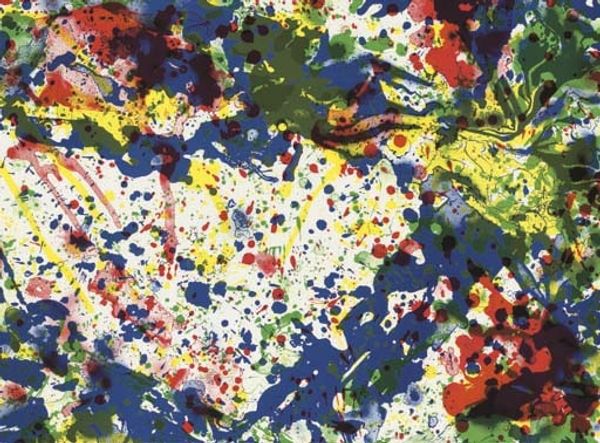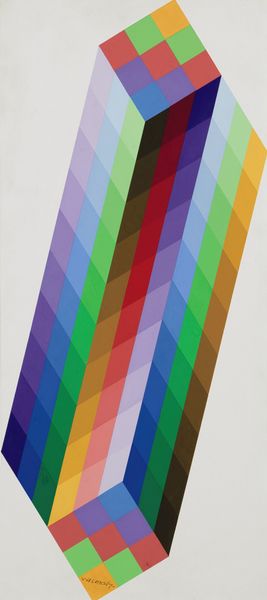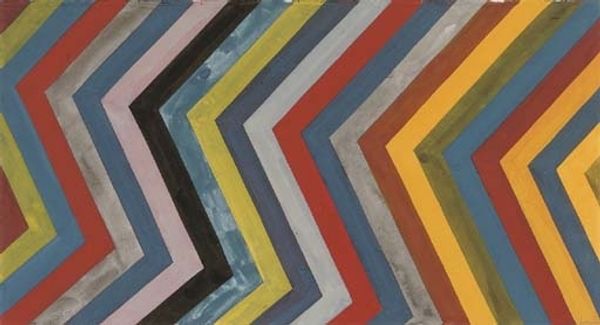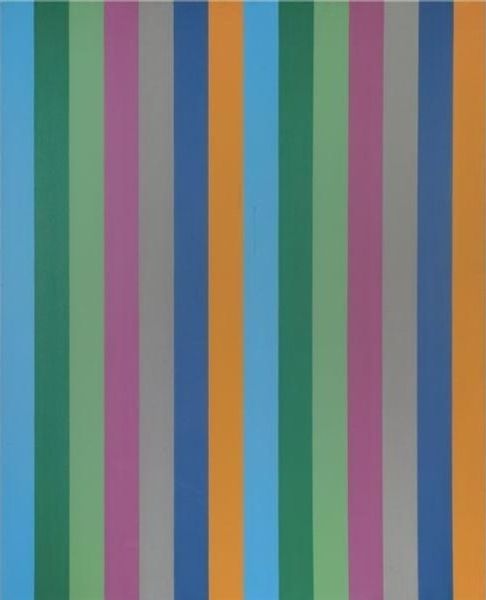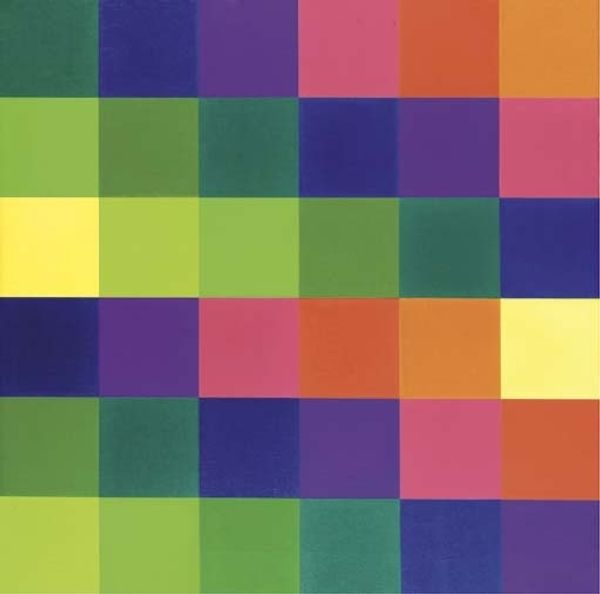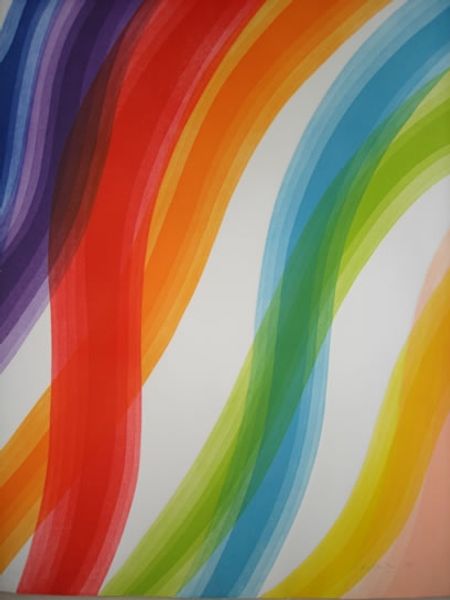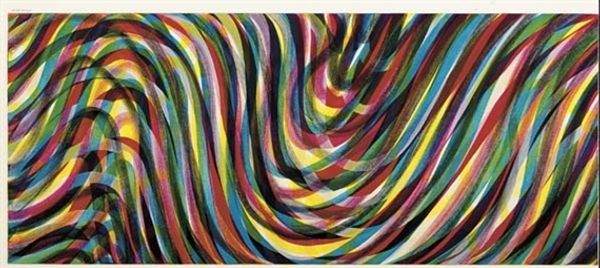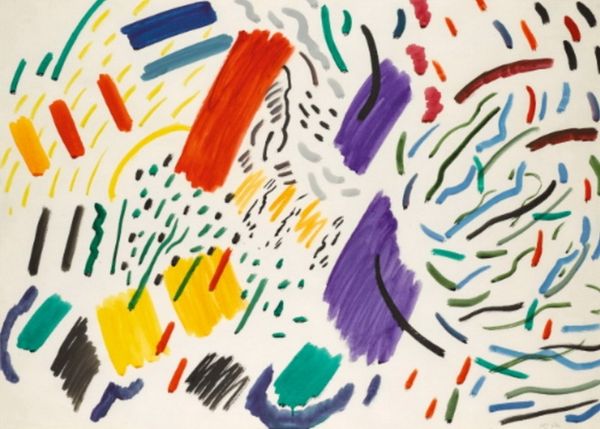
stain, painting, acrylic-paint
#
abstract-expressionism
#
washington-colour-school
#
stain
#
painting
#
op art
#
colour-field-painting
#
acrylic-paint
#
geometric
#
abstraction
#
line
#
modernism
Copyright: Morris Louis,Fair Use
Curator: This is Morris Louis’s "Omega I", created in 1960, a stunning example of Color Field painting. Editor: It's remarkably airy. The diluted acrylic washes create a watercolor-like effect on raw canvas, producing something quite delicate. Curator: Absolutely, that technique, the staining, was revolutionary. Louis poured diluted acrylic directly onto the canvas, allowing the pigments to soak into the fabric. Editor: The labor seems almost hands-off. You don't see the typical artist's gesture; it's more like an interaction between material and support, shaped as much by gravity and chance as by design. Curator: Indeed. He was actively diminishing his presence. The all-over composition and luminous colours transcend the angst and drama of gestural AbEx and the role of the artist-genius promoted at the time. This shifted the perception of art towards pure opticality. Editor: Interesting. Yet it is clearly crafted by someone. The control is quite visible in the neat bands along the edges, contrasting with the empty space in the center. The negative space activates our reading. And is it 'empty'? I am not sure it is at all: perhaps charged and poised. Curator: That brings in how these works operated publicly, moving towards the 'sublime'. These Color Field artists were consciously striving to offer an alternative form of monumental public art away from the figurative or narrative muralism and public sculpture favored in earlier social movements. Editor: The scale certainly lends itself to that, a challenge to earlier public works in painting, using a material sensibility and working process rooted in earlier movements, like surrealist automatism. I like this material engagement without losing sight of the bigger picture. Curator: So we see both a shift in artistic practice and how those artworks could operate within the broader social sphere. Editor: And, thinking about the materials and how the painting was crafted has certainly amplified the visual experience, hasn't it?
Comments
No comments
Be the first to comment and join the conversation on the ultimate creative platform.



